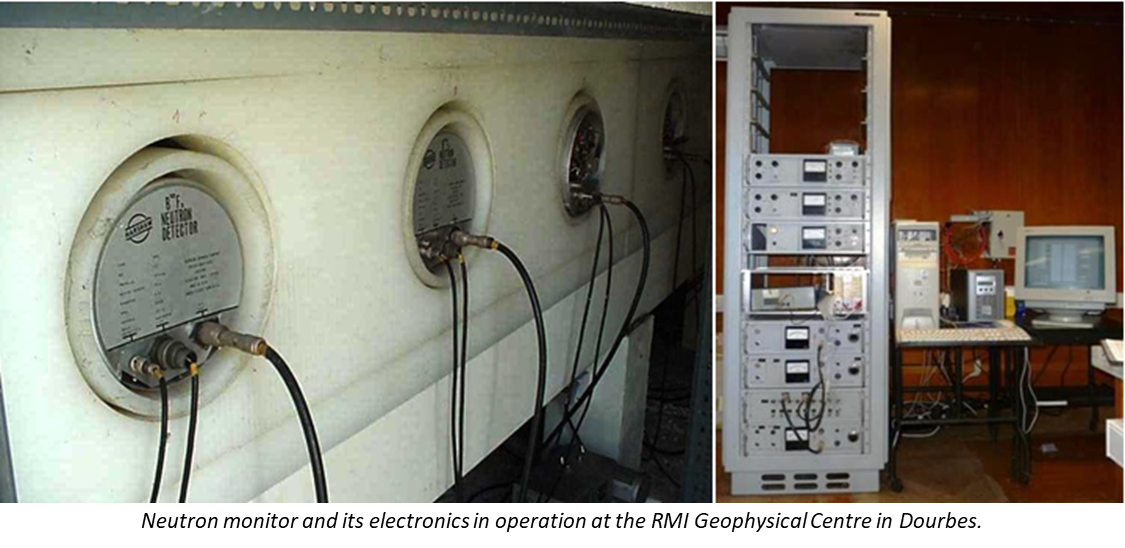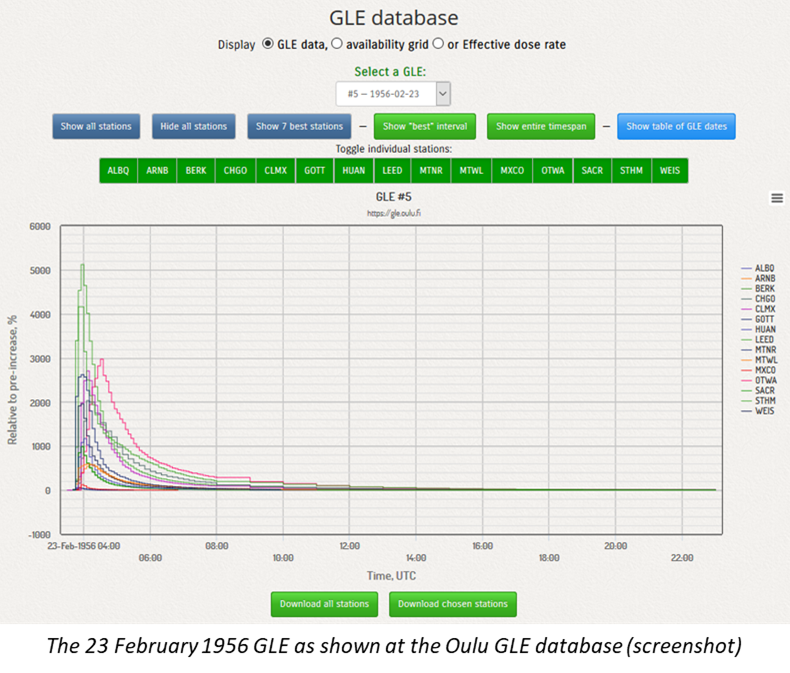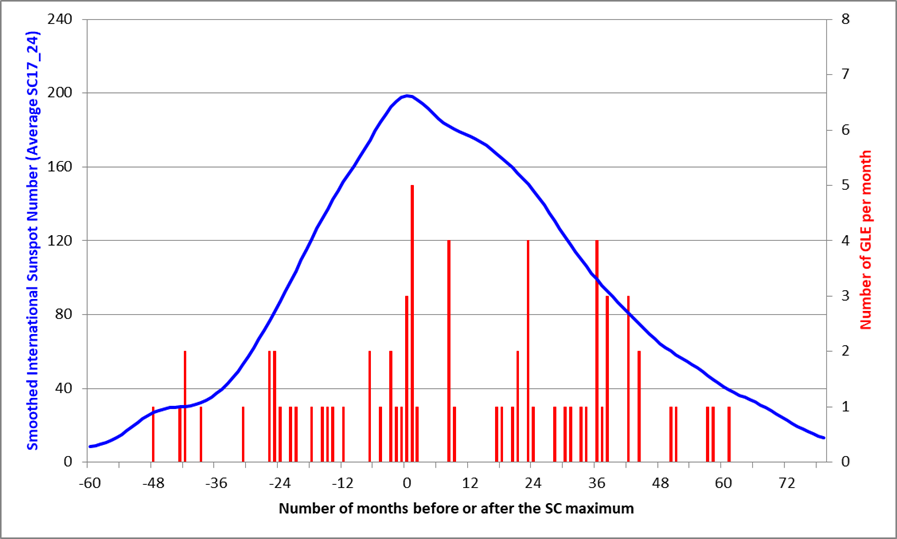A Ground Level Enhancement (GLE) takes place when a proton event is associated with particles having energies well above the "regular" 10 MeV (Note 1), rather in the neighbourhood of around 1 GeV, i.e. about 50 to 100 times more energetic. When these particles collide with particles in the Earth's upper atmosphere, they can create a shower of secondary particles which can be detected by neutron monitors on the ground such as in Dourbes. GLEs temporarily increase the natural background radiation, and can be the source of glitches in electronic equipment (computers,...) on the earth's surface.

Several conditions (number of stations, percentage increase above background) need to fulfilled before an increase in the observed neutron counts is validated as a genuine GLE. Since the start of the measurements in the 1940s, only 72 such events have been recorded. For solar cycles (SC) 21 to 23, about 13-16 events per solar cycle have been recorded. For SC24, the count stops at 2: one on 17 May 2012, and the other on 10 September 2017 which was associated with the 2nd strongest flare of SC24 (X8). See this STCE news item for more info on the strength of SC24. One of the strongest GLEs ever registered took place on 23 February 1956, increasing the neutron counts at some locations by several 1000% compared to pre-event levels.

One can wonder if and how these rare events are spread over a solar cycle. As the first detected GLE occurred during SC17, an average solar cycle was created by centering the smoothed sunspot maximum of each solar cycle (SC17 to SC24), then averaging and smoothing the monthly sunspot numbers (SILSO). The thus created average solar cycle serves as a backdrop for the timings of the GLEs which can happen before or after the solar cycle maximum (point "0" on the horizontal axis). A list of these GLEs can be found at e.g. Oulu or at the Bartol Research Institute. In the chart underneath, the average solar cycle is represented by the blue curve, and the red bars display the monthly number of GLEs before or after the month of solar cycle maximum. It is clear that GLEs can occur during pretty much the entire solar cycle, from 4 years (48 months) before SC maximum to about 5 years after it. Nonetheless, it is equally clear that GLEs have a preference to happen during the period of maximum and during the declining phase of the solar cycle. Note the conclusion is based on a relatively small number of GLEs, and that some sunspot groups produced multiple GLEs during their transit over the solar disk.

Note 1 - 10 MeV = 10 million eV. The eV (electron volt) is a very tiny amount of energy corresponding to about 0.16 billionth of a billionth of a Joule. For comparison, a flying mosquito has a kinetic energy of about a trillion eV (= 1000 billion eV).





